Over the River and Through the Woods: In Search of Sape' in The Heart of Borneo
Location: Sungai Ting, Kayan Mendalam, Kapuas Hulu, West Kalimantan.
Sound: Sape' kayan (Literally "sape' of the Kayan", after the Dayak sub-ethnic group from which it originates.)
Of the various Dayak lutes that fall under the umbrella term sape, the sape' kayan is one of the least known and documented. While the instrument called sape' kenyah or simply sape', sampe, or sampeq is an international symbol of traditional music in Borneo (it is even the highlight of the world famous Rainforest World Music Festival in Kuching, Sarawak), the sape' kayan exists on the fringes, rarely recorded or performed. In fact, before my visit to West Kalimantan, I had no idea it existed at all - I was searching for sape' kenyah, and was lucky enough to find its ancient brother as well.
Despite sharing a name, the sape' kayan is distinctly different from its more well-known sibling in sound and construction. Described by Philip Yampolsky as looking like a "short-necked shovel" (in comparison to the boat-shaped sape' kenyah), it is carved from one piece of wood, with a squat hollow body, open in the back, out of which extends a short neck with three frets scalloped out of the wood. Unlike the sape' kenyah, which has up to five strings, the sape' kayan has only two - one acts as a drone while the melody is played on the other.
The instrument is played exclusively by the Kayan people, one of the myriad Dayak sub-groups found throughout Borneo. Originating in East Kalimantan, the Kayan came to the Kapuas Hulu area of West Kalimantan more than a hundred years ago in a mass migration, bringing their music with them. The sape' kayan seems to be used in the same contexts as its boat-shaped brother, providing accompaniment to dancing as well as for magical healing rituals.
Song notes:
"Lengilin" -
Pak Paran described this tune as an accompaniment to a dance inspired a bird he called "manuk haluk", possibly a kind of eagle that lives in the jungles of Kalimantan. The slow, repetitive sound is meant to echo the deliberate, bird-like movement of the dancers.
"Healing Song" -
This tune is meant to be played in conjunction with a ritualistic healing ceremony performed by a dukun, something like a "witch doctor." The Dayak believe that the sound of the sape' itself can have a mystical healing effect.
Context:
Ever since seeing videos of the massive boat-shaped sape' kenyah and hearing its sweet, droning sound, I'd wanted to go to Borneo to experience it for myself. With a week off for the annual Lebaran holiday, my travelling companion Sinta and I decided it was finally time to head deep into the heart of darkness in search of sounds.
After an indescribably long and arduous journey across the massive island, we finally reached Putussibau, the largest town in the Kapuas Hulu regency of West Kalimantan, an area renowned for its traditional Dayak culture. Renting a motorbike, Sinta and I headed off into the surrounding countryside with no guide or any particular idea where to find music.
A visit to Uluk Palin, a massive 200-year old Dayak longhouse twenty feet off the ground and hundreds of feet long, turned up empty - sape' was no longer played there, they told us. Go to Kayan Mendalam, one man said. There you will surely find sape' music.
Heading towards Kayan Mendalam, we'd occasionally stop and ask locals, lounging on the porches of their wooden stilted houses, where sape' music could be found. They'd point us towards the endless road ahead, saying "There's a musician in a village that way...it's not far!" We'd proceed down endless gravel roads, passing nothing but forest and tall grass for ten, twenty steaming hot minutes, and then reach a riverside, where we'd have to load our motorbike onto a small wooden raft and get ported across and continue the bumpy journey anew. Put-putting across one placid river, I asked the raftsman about sape'. Pak Paran lives nearby, he said - he plays sape'. Was it actually near? Distance seemed to have a different meaning in the sprawling wilderness of this largely unpopulated area.
Finally we reached the small village where Pak Paran was said to live - Sungai Ting. After finding his house, an old man came around the side of the house, wiping dirt off his hands and looking curiously at his visitors. "Looking for sape', huh? Come on in!"
Pak Paran went to get his instrument, and when he returned I was confused - the instrument looked nothing like the sape' kenyah I had seen and heard so much. "This is a sape' kayan", he explained - "I made it myself." Sitting on the floor of his largely empty wooden house, under pictures of Jesus and family members of in traditional Dayak garb, Pak Paran smoked a kretek and told us proudly about the music of his people. "Kids these days don't care about Dayak art anymore - they just watch television and drink", he lamented. "I'm one of the few left here who play this music."
After some small talk and a tune up, Pak Paran played a number of short pieces for us, stopping between each one to explain the meaning - this one is about a bird, this one is for dancing, this one is for healing. One tune, he explained, was even said to be played in the past to raise the dead. The sound was so different from the sweetness of the sape' kenyah - it was minimal, raw, sounding dusty with age. I was enthralled. This wasn't what I'd been looking for, but it was an accidental discovery which made the long trek across rivers and jungles seem like a small price to pay.
Thanks to Jesse Clark for lending his mixing expertise to the problematic recording of Pak Paran's healing song!

